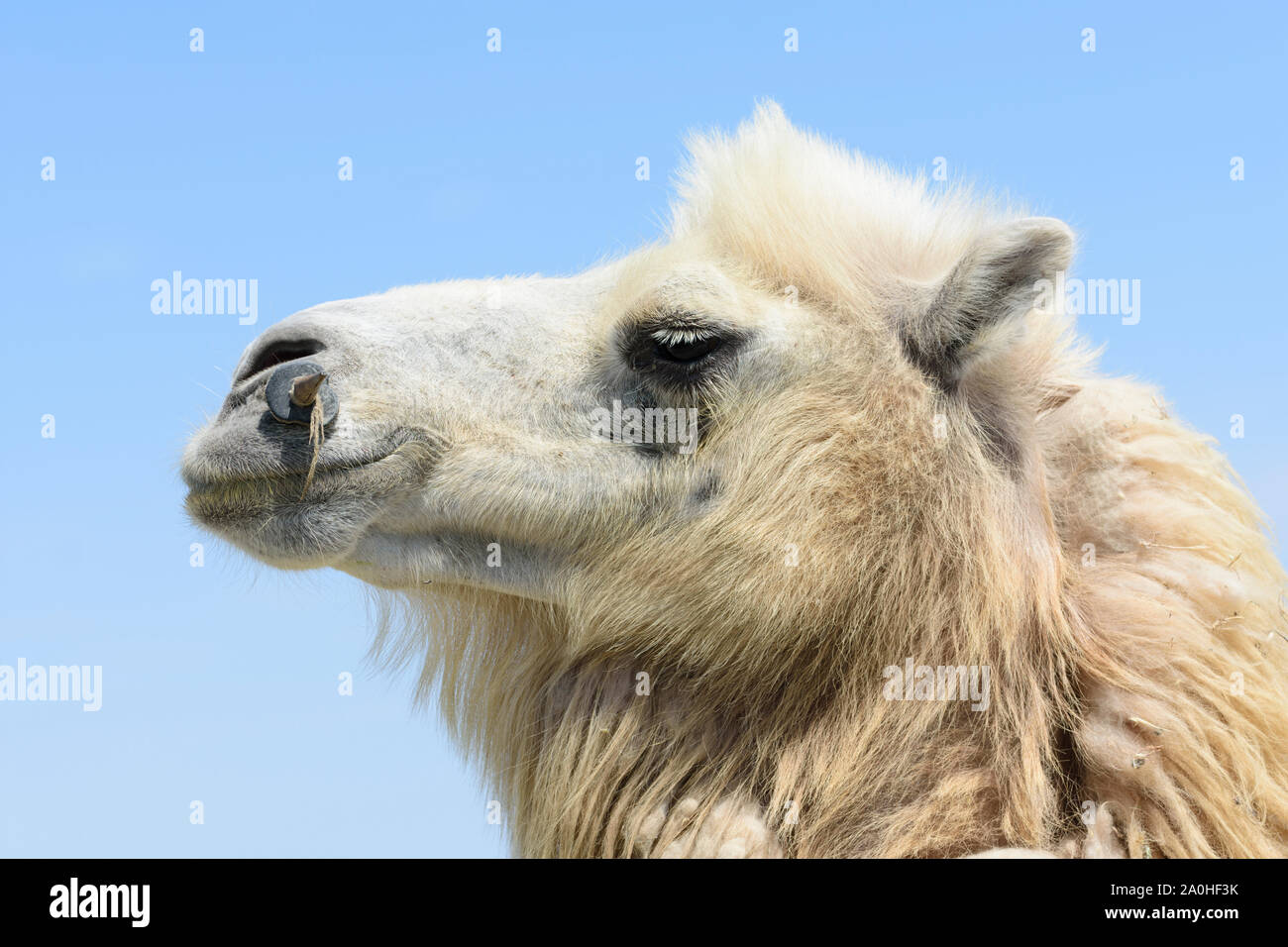Bactrian camel in Kazakhstan, most of them losing their thick fur after winter

Image details
Contributor:
Bert de Ruiter / Alamy Stock PhotoImage ID:
2A0HF3KFile size:
68.7 MB (2.6 MB Compressed download)Releases:
Model - no | Property - noDo I need a release?Dimensions:
6000 x 4000 px | 50.8 x 33.9 cm | 20 x 13.3 inches | 300dpiDate taken:
21 May 2018Location:
KazakhstanMore information:
Wikipedia: The Bactrian camel (Camelus bactrianus) is a large, even-toed ungulate native to the steppes of Central Asia. The Bactrian camel has two humps on its back, in contrast to the single-humped dromedary camel. Its population of two million exists mainly in the domesticated form. Their name comes from the ancient historical region of Bactria. Domesticated Bactrian camels have served as pack animals in inner Asia since ancient times. With its tolerance for cold, drought, and high altitudes, it enabled the travel of caravans on the Silk Road. A small number of feral Bactrian camels still roam the Mangystau Province of southwest Kazakhstan and the Nubra Valley in India. Bactrian camels, whether domesticated or feral, are a separate species from the wild Bactrian camel which is the only truly wild (as opposed to feral) species of camel in the world. The Bactrian camel shares the genus Camelus with the dromedary (C. dromedarius) and the wild Bactrian camel (C. ferus). The Bactrian camel belongs to the family Camelidae. The ancient Greek philosopher Aristotle was the first to describe the species of Camelus: in his 4th-century-BC History of Animals he identified the one-humped Arabian camel and the two-humped Bactrian camel. The Bactrian camel was given its current binomial name Camelus bactrianus by Swedish zoologist Carl Linnaeus in his 1758 publication Systema Naturae.